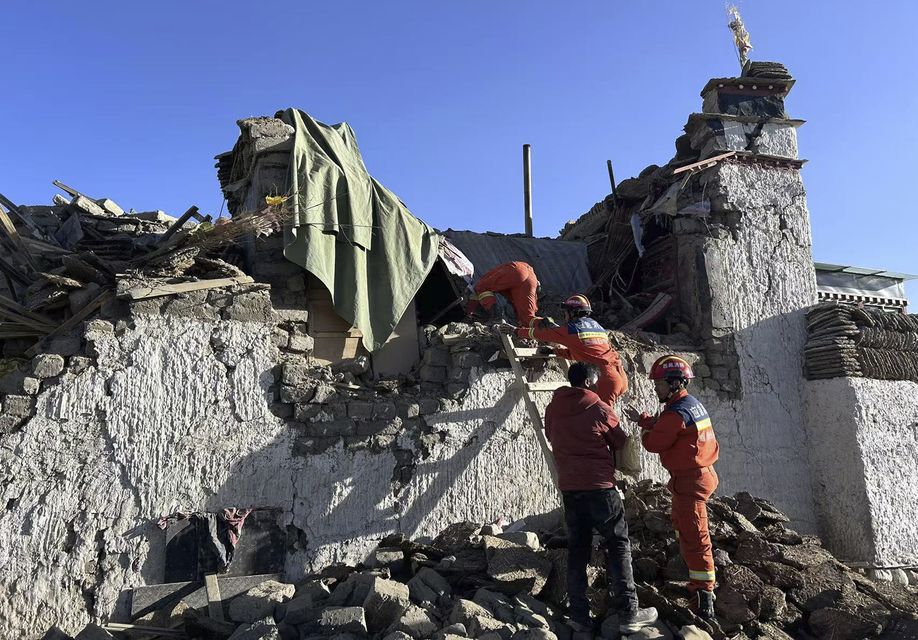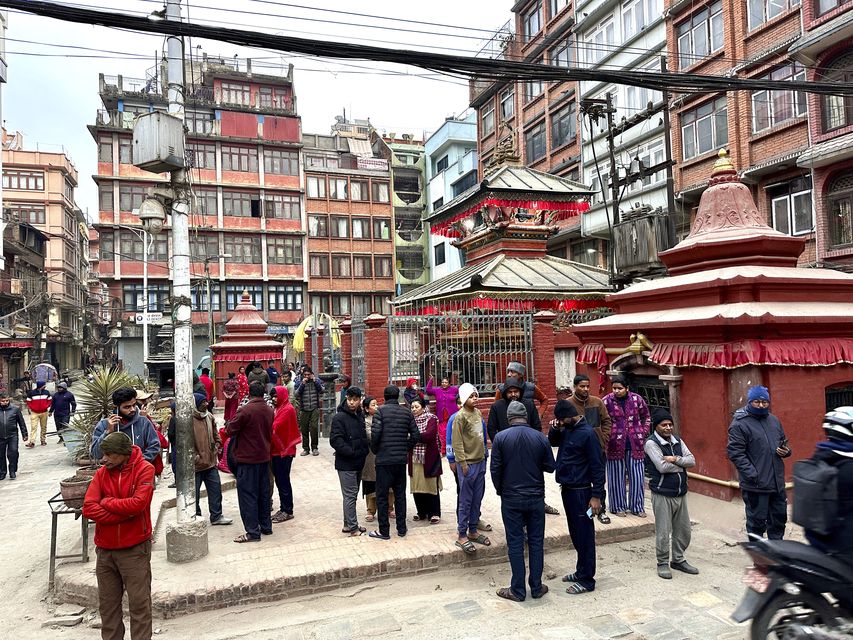A strong earthquake killed at least 95 people in Tibet on Tuesday and left many others trapped as dozens of aftershocks shook the high-altitude region of western China and across the border in Nepal.
Officials in the region said at a brief news conference that 130 others were injured, state broadcaster CCTV said.
Video on state broadcaster CCTV showed orange-suited rescue workers climbing piles of debris blocking homes in a heavily damaged village, while chunks that had been knocked off buildings littered streets and crushed cars in other areas.
Rescue workers search for survivors in the aftermath of an earthquake in Changsuo Township of Dingri in Xigaze, southwestern China’s Tibet Autonomous Region (Xinhua via AP)
State media reported that about 1,000 houses were damaged and 130 people were injured in addition to the deaths, citing the Tibet earthquake relief headquarters.
The US Geological Survey said the earthquake measured magnitude 7.1 and was relatively shallow at a depth of about 10 kilometres (six miles).
China recorded the magnitude as 6.8.
The epicentre was about 75 kilometres (50 miles) north-east of Mount Everest, which straddles the China-Nepal border.
The area is seismically active and is where the India and Eurasia plates clash and cause uplifts in the Himalayan mountains strong enough to change the heights of some of the world’s tallest peaks.
About 50 aftershocks were recorded in the three hours after the earthquake, and the Mount Everest scenic area on the Chinese side was closed after the quake.
About 1,500 fire and rescue workers were deployed to search for people, said the Ministry of Emergency Management.
Two hundred soldiers joined the search, CCTV said.
Chinese leader Xi Jinping called for all-out efforts to rescue people, minimise casualties and resettle those whose homes were damaged.
Nepalese people stand after rushing out of their homes after experiencing an earthquake in Kathmandu, Nepal, (Sunil Sharma/AP)
Vice Premier Zhang Guoqing was dispatched to the area to guide the work.
CCTV said there are a handful of communities within five kilometres (three miles) of the epicentre, which was 380 kilometres (240 miles) from Lhasa, the capital of Tibet, and about 23 kilometres (14 miles) from the region’s second-largest city of Shigatse, known as Xigaze in Chinese.
The average altitude in the area around the epicentre is about 4,200 metres (13,800 feet), the China Earthquake Networks Centre said in a social media post.
In Nepal, authorities asked officials in the mountainous area near the epicentre to search for any casualties or damage.
The National Emergency Operation Centre in Kathmandu said people in north-eastern Nepal strongly felt the earthquake but there were no immediate reports of injuries or damage to houses.
A police officer in Solukhumbu district, where Mount Everest is located, said by telephone that there were no reports of damage.
The area, often crowded with climbers and hikers, was empty in the depth of winter.
Many residents move to the south to avoid the harsh winter.
About 230 kilometres (140 miles) from the epicentre in Nepal’s capital, Kathmandu, the earthquake woke up residents and sent them running out of their homes into the streets.
There have been 10 earthquakes of at least magnitude 6 in the area where Tuesday’s quake hit over the past century, the USGS said.

